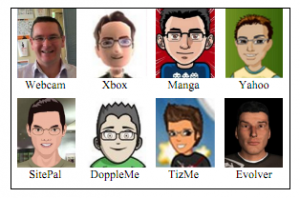Microsoft study finds creepy avatars are a no-no in the workplace

As part of its growing push to bring gaming technologies into the workplace, Microsoft has been championing the idea of using avatars for group chat/collaboration purposes.

But do business users really want to be represented by avatars when engaging in enterprise-style conferencing? Is Microsoft taking this whole "consumerization of IT" concept a little (or a lot) too far?
Never fear: Microsoft Research has been on the case, conducting a study of user preferences around avatars. The results are available in a new white paper, "Me and My Avatar: Exploring Users’ Comfort with Avatars for Workplace Communication."
Microsoft researcher Kori Inkpen Quinn and University of Washington researcher Mari Sedlins conducted a survey that asked users to rate webcam photos, plus a number of different types of avatars across several dimensions -- comfort, resemblance, realism, formality, appropriateness for work, and creepiness -- using a 10-point scale. Each avatar set was sent to 1,600 randomly selected email addresses from the corporate directory of an unnamed "large company." According to the white paper, 1,020 people responded, 806 males and 211 females between the ages of 21 and 68.
The results? From the paper:
"The results from this survey demonstrate that people are open to the idea of using avatars for workplace communication; however, the choice of avatar can significantly impact people’s comfort. In general, the respondents in our survey were open to interacting with a wide variety of avatars, from cartoonish to realistic and casual to formal, as long as the representation wasn’t too eerie or creepy. In contrast, users’ preferences for avatars they are willing to use to represent themselves were much more stringent. People primarily wanted more formal, realistic avatars."
A (somewhat) related aside: Inkpen Quinn also is part of a team of Microsoft researchers exploring the concept of "video pen pals." Microsoft researchers will be presenting their work on VideoPal at the Computer Supported Cooperative Work (CSCW) 2011 conference in mid-march. VideoPal is a video-based asynchronous communication system that is being tested by 30 fourth- and fifth-grade students from the U.S. and Greece.
How do you feel about avatar usage in the workplace? Do you foresee a bunch of your work colleagues in cartoon form holding virtual meetings in the not-so-distant future?